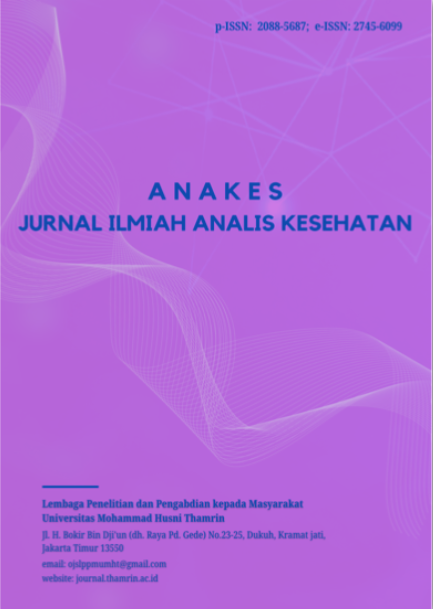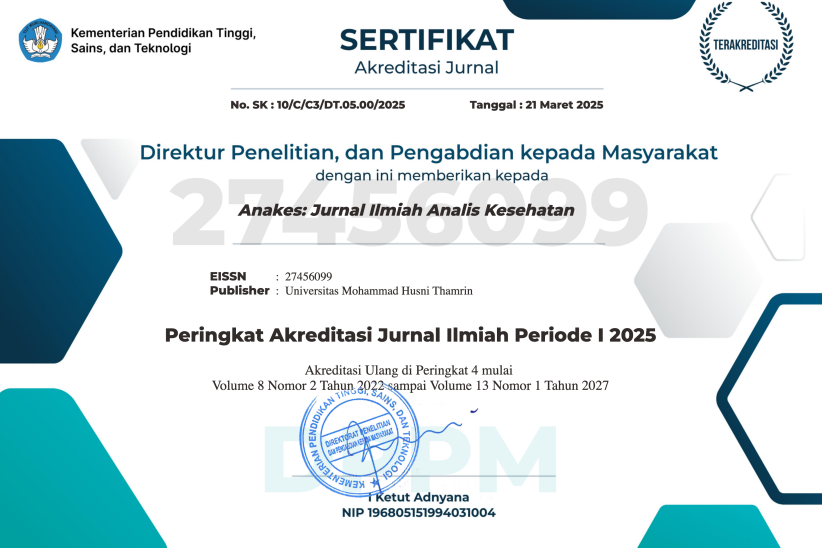Gambaran Kadar Hemoglobin Pada Pasien Malaria di RSPAD Gatot Soebroto Jakarta Indonesia
DOI:
https://doi.org/10.37012/anakes.v11i1.2669Abstract
Malaria is both an acute and chronic disease caused by protozoa of the genus Plasmodium with the clinical manifestation of fever, anemia and spleen enlarfication. People with malaria, which the plasmodium attacks, are red blood cells. Malaria infections destroy erythrocytes, which results in a change in hemoglobin levels far lower than normal value. This study aims to find out the hemoglobin level in malaria patients, knowing the distribution of the number of malaria patients and the hemoglobin levels based on gender, age, and type of Plasmodium sp. The study employed a secondary descriptive method of data analysis by calculating the distribution of hemoglobin levels presented in the form of tables and narratives, the data used by up to 116 samples of malaria patients. Data retrieval took place at rspad gatot soebroto lab with populations and samples from 2013- 2023. Obtained from a hemoglobin level check in malarial patients shows a value of min 7.0 gr/dl, Max 16.9 gr/dl, mean 12.6 gr/dl, low hemoglobin level 82 patients (70.7%), normal 31 patients (26.7%), 3 (2.6%), the highest distribution of the number of patients in 2022 (15.5 percent). With the largest abnormal measured measured in men by 75 patients (64.2%), the results of a lower level check at 19- 44 (adults), with 64 patients (55.2%), the most malaria patients suffer from plasmodium vivax with a lower percentage of 51 patients (44.0%). In conclusion, that the most malaria affected men, an age susceptible to 19-44 (adult) malaria, and most malaria patients have plasmodium vivax infected.
Keywords : Hemoglobin, gender, malaria, Plasmodium sp, age
Downloads
Published
How to Cite
Issue
Section
Citation Check
License
Copyright (c) 2025 Vila Damayanti, Atna Permana, Prima Nanda Fauziah, Ellis Susanti, Imas Latifah

This work is licensed under a Creative Commons Attribution 4.0 International License.
Anakes :Â Jurnal Ilmiah Analis Kesehatan allows readers to read, download, copy, distribute, print, search, or link to the full texts of its articles and allow readers to use them for any other lawful purpose. The journal allows the author(s) to hold the copyright without restrictions. Finally, the journal allows the author(s) to retain publishing rights without restrictions Authors are allowed to archive their submitted article in an open access repository Authors are allowed to archive the final published article in an open access repository with an acknowledgment of its initial publication in this journal.

Lisensi Creative Commons Atribusi 4.0 Internasional.











